|
Reply |
Message 1 of 306 on the subject |
|
|
LA PIRAMIDE ES UN CUERPO GEOMETRICO QUE TIENE 5 SUPERFICIES
 |
|
A regular square pyramid is determined by its medial right triangle, whose edges are the pyramid's apothem (a), semi-base (b), and height (h); the face inclination angle is also marked. Mathematical proportions b:h:a of  and and  and and  are of particular interest in relation to Egyptian pyramids. are of particular interest in relation to Egyptian pyramids.
Mat 16:18 And I say also unto thee, That thou art Peter, and upon this rock I will build my church; and the gates of hell shall not prevail against it.
οικοδομεω oikodomeo {oy-kod-om-eh'-o} also oikodomos οικοδομος {oy-kod-om'-os} Ac 4:11 from the same as 3619; TDNT - 5:136,674; v AV - build 24, edify 7, builder 5, build up 1, be in building 1, embolden 1; 39 1) to build a house, erect a building 1a) to build (up from the foundation) 1b) to restore by building, to rebuild, repair 2) metaph. 2a) to found, establish 2b) to promote growth in Christian wisdom, affection, grace, virtue, holiness, blessedness 2c) to grow in wisdom and piety
|
FI=PHI=NUMERO DE ORO=1.618033
171. Salmos 45:9: Hijas de reyes están entre tus ilustres;Está la REINA a tu diestra con oro de Ofir.
SO-FI-A/SABIDURIA/S-OFI-A/FI-L-OFI-A
REINA VESTIDA CON ORO DE O-FI-R
EL MISMO NUMERO 5 ESTA DISEÑADO EN FUNCION A LA CUADRATURA DEL CIRCULO
PARTE SUPERIOR/CUADRADO
PARTE INFERIOR/CIRCULO
|
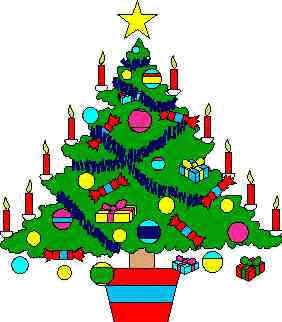  ¿LA RESURRECCION DE CRISTO AL TERCER DIA ES UN SIMBOLO DEL SANTO GRIAL?. ARBOL DE NAVIDAD Y SU NEXO CON EL TERCER DIA
GENESIS
1:9 Dijo también Dios: Júntense las aguas que están debajo de los cielos en un lugar, y descúbrase lo seco. Y fue así.
1:10 Y llamó Dios a lo seco Tierra, y a la reunión de las aguas llamó Mares. Y vio Dios que era bueno.
1:11 Después dijo Dios: Produzca la tierra hierba verde, hierba que dé semilla; árbol de fruto que dé fruto según su género, que su semilla esté en él, sobre la tierra. Y fue así.
1:12 Produjo, pues, la tierra hierba verde, hierba que da semilla según su naturaleza, y árbol que da fruto, cuya semilla está en él, según su género. Y vio Dios que era bueno.
1:13 Y fue la tarde y la mañana el día tercero. (LA SEMILLA/SEMEN ES MASCULINA y el ARBOL que produce el fruto/hijo es femenino)
194. Lucas 1:42: y exclamó a gran voz, y dijo: Bendita tú entre las mujeres, y bendito el FRUTO de tu vientre.
28. Mateo 16:21: Desde entonces comenzó Jesús a declarar a sus discípulos que le era necesario ir a Jerusalén y padecer mucho de los ancianos, de los principales sacerdotes y de los escribas; y ser muerto, y resucitar al tercer día.
29. Mateo 17:23: y le matarán; mas al tercer día resucitará. Y ellos se entristecieron en gran manera.
30. Mateo 20:19: y le entregarán a los gentiles para que le escarnezcan, le azoten, y le crucifiquen; mas al tercer día resucitará.
31. Mateo 27:64: Manda, pues, que se asegure el sepulcro hasta el tercer día, no sea que vengan sus discípulos de noche, y lo hurten, y digan al pueblo: Resucitó de entre los muertos. Y será el postrer error peor que el primero.
32. Marcos 9:31: Porque enseñaba a sus discípulos, y les decía: El Hijo del Hombre será entregado en manos de hombres, y le matarán; pero después de muerto, resucitará al tercer día.
33. Marcos 10:34: y le escarnecerán, le azotarán, y escupirán en él, y le matarán; mas al tercer día resucitará.
34. Lucas 9:22: y diciendo: Es necesario que el Hijo del Hombre padezca muchas cosas, y sea desechado por los ancianos, por los principales sacerdotes y por los escribas, y que sea muerto, y resucite al tercer día.
35. Lucas 13:32: Y les dijo: Id, y decid a aquella zorra: He aquí, echo fuera demonios y hago curaciones hoy y mañana, y al tercer día termino mi obra.
36. Lucas 18:33: Y después que le hayan azotado, le matarán; mas al tercer día resucitará.
37. Lucas 24:7: diciendo: Es necesario que el Hijo del Hombre sea entregado en manos de hombres pecadores, y que sea crucificado, y resucite al tercer día.
38. Lucas 24:21: Pero nosotros esperábamos que él era el que había de redimir a Israel; y ahora, además de todo esto, hoy es ya el tercer día que esto ha acontecido.
39. Lucas 24:46: y les dijo: Así está escrito, y así fue necesario que el Cristo padeciese, y resucitase de los muertos al tercer día;
40. Juan 2:1: Al tercer día se hicieron unas bodas en Caná de Galilea; y estaba allí la madre de Jesús.
41. Hechos 10:40: A éste levantó Dios al tercer día, e hizo que se manifestase;
42. Hechos 27:19: y al tercer día con nuestras propias manos arrojamos los aparejos de la nave.
43. 1 Corintios 15:4: y que fue sepultado, y que resucitó al tercer día, conforme a las Escrituras; |
|
|
|
Reply |
Message 142 of 306 on the subject |
|
WHEN JESUS HONORED THE FIRST DAY
"Then the same day at evening, being the first day of the week, when the doors were shut where the disciples were assembled for fear of the Jews, came Jesus and stood in the midst, and saith unto them, Peace be unto you," JOH 20:19.
At the end of forty-nine years there are two Sabbaths in a row, the forty-ninth and fiftith years. The forty-ninth year was the year of the atonement and the fiftieth year was the jubilee. The jubilee is the resurrection. The Lord is teaching us that the Sabbath was moved from the seventh day to the first day at that point. That jubilee was that second Sabbath in a row, and it was where there were two Sabbaths one right after the other. The Lord now honors the first day of the week from that day on--from the day of jubilee--the day of the resurrection of Christ, which was on the first day of the week. That’s the New Testament Sabbath.
The atonement was made on the forty-ninth year, and the fiftieth year was the second Sabbath right after each other which points to that resurrection of Christ as the institution of the New Testament Sabbath on the first day of the week.
The Lord will always bestow honor upon His own institutions. If we want to confirm, in fact, that the first day of the week is the New Testament Sabbath, then we must see how the Lord Jesus Christ bestowed honor upon it. Before the atonement it was Christ’s custom to honor the seventh day with His presence. We see that throughout Scripture, and we see in LUK 4:16; "And He came to Nazareth, where He had been brought up; and, as His custom was, He went into the synagogue on the sabbath day, and stood up to read." That was His custom. He honored the seventh day Sabbath up until the Day of Atonement. Then from that day forward, He honored the first day. The Lord honored the first day as the Lord’s day. Scripture is void of one single reference of Jesus honoring the seventh day with His presence after His resurrection.
After Christ’s resurrection, He honored the first day of the week with His presence. MAR 16:9; "Now when Jesus was risen early the first day of the week, He appeared first unto Mary Magdalene, out of whom He had cast seven devils." We see that Jesus appeared to the two men on the way to Emmaus on the first day of the week in LUK 24:33-36. "And they rose up the same hour, and returned to Jerusalem, and found the eleven gathered together, and them that were with them, Saying, The Lord is risen indeed, and hath appeared to Simon. And they told what things were done in the way, and how he was known of them in breaking of bread. And as they thus spake, Jesus himself stood in the midst of them, and saith unto them, Peace be unto you." This was the same day - that same first day of the week. We see that Christ appeared to His disciples on the first day of the week in JOH 20:19; "Then the same day at evening, being the first day of the week, when the doors were shut where the disciples were assembled for fear of the Jews, came Jesus and stood in the midst, and saith unto them, Peace be unto you." In ACT 20:7 we see that in the New Testament church the disciples gathered on the first day of the week; "And upon the first day of the week, when the disciples came together to break bread, Paul preached unto them, ready to depart on the morrow; and continued his speech until midnight." The first day of the week is repeatedly referred to in Scripture as the Lord’s day. That transition took place on that great jubilee, c.f., Leviticus.
It’s so clear there were these Sabbaths, one every seven years for forty-nine years and then another the following year. Two Sabbaths, one right after the other. When Christ lay in the grave was the Old Testament Sabbath, and the New Testament Sabbath on the first day of the week honours the resurrection of the Lord Jesus Christ.
Let’s look at one more perfect confirmation of this. The Lord gave special honor to the first day of the week by fulfilling that which was spoken by the prophet Joel, sending the promise of the Father on the day of Pentecost. ACT 2:32-33 says, "This Jesus hath God raised up, whereof we all are witnesses. Therefore being by the right hand of God exalted, and having received of the Father the promise of the Holy Ghost, he hath shed forth this, which ye now see and hear." The day of Pentecost was on the first day of the week. There are many Scriptures that help establish that the New Testament Sabbath - the New Testament Lord’s day is the first day of the week, and not the seventh.
It’s very important that we study Leviticus, especially LEV 25:8-10, to see how that these Sabbaths of years were the types and shadows of the atonement in the forty-ninth year and the jubilee in the fiftieth year. It isn’t a matter of speculation, but it is clearly set forth that the jubilee is the symbol of the resurrection of Christ.
How welcome to the saints, when pressed
With six days’ noise, and care, and toil,
Is the returning day of rest,
Which hides them from the world awhile!
Now, from the throng withdrawn away,
They seem to breathe a different air;
Composed and softened by the day,
All things another aspect wear.
How happy if their lot is cast
Where stated the gospel sounds!
The word is honey to their taste,
Renews their strength and heals their wounds.
With joy they hasten to the place
Where they their Saviour oft have met;
And while they feast upon his grace,
Their burdens and their griefs forget.
This favored lot, my friends, is ours;
May we the privilege highly prize,
And find these consecrated hours
Sweet earnests of immortal joys.
Our sermons and devotions are a ministry of Gospel Chapel located in Conrad, Montana. We also have a daily devotion and sermon notes on-line. We pray this devotion has been a blessing to those who read it. Thank you.
http://www.gospelchapel.com/Devotion/John/38.htm
|
|
|
|
Reply |
Message 143 of 306 on the subject |
|
EL JUBILEO (LIBERACION DE LA ESCLAVITUD) TIENE CONNOTACION CON LA RESURRECCION DE CRISTO (NUMERO 8) EN EL CONTEXTO A SU APARICION POR PRIMERA VEZ A MARIA MAGDALENA
-
The crucifixion and resurrection of Christ is perhaps the most important single ....
the month of the blowing of the Jubilee, as 27 CE was a Jubilee year and
Atonement on ...... Mary Magdalene spoke to him when she went to the tomb on
Sunday ...
-
www.gospelchapel.com/Devotion/John/38.htm - En caché
That jubilee was that second Sabbath in a row, and it was where there were ...
After Christ's resurrection, He honored the first day of the week with His presence.
... appeared first unto Mary Magdalene, out of whom He had cast seven devils.
-
www.gospelchapel.com/Devotions/6_98/devotion_6-15-98.html - En caché
The jubilee points to the resurrection of Christ. ... early the first day of the week,
he appeared first to Mary Magdalene, out of whom he had cast seven devils.
-
Mary Magdalene tries to assure Jesus that "Everything's Alright" while anointing
him ..... Also in 1994, a stage version titled Jesus Christ Superstar: A Resurrection
was ... was taken to Barbados to celebrate Queen Elizabeth II's Golden Jubilee.
-
Read Mary Magdalene's story of her encounter with the risen Christ and how she
became an evangelist to the apostles! Read the glorious good news about God ...
-
Let us meditate upon the resurrection of Christ and discover the pathway of light
that ... The Risen Lord Appears to Mary Magdalen, Apostle to the Apostles ..... day
of days, To God your hearts and voices raise, In laud and jubilee and praise.
-
In fact when he arose he told Mary Magdalene that he had not yet ascended to
the ... The Year of Jubilee, the word means to be jubilant or to exult, was the
fiftieth .... the second coming of Christ, a bodily resurrection, a reign of Christ on
earth, ...
-
www.jubilee-resources.com/articles/the-vacant-cross--tomb/ - En caché
"For the wages of sin is death, but the gift of God is eternal life in Christ Jesus our
.... spoke with Jesus after the resurrection including Mary Magdalene, Cleopas, ...
-
Was Mary Magdalene a prostitute -- or an apostle? ... The Life of Adam and Eve,
The Book of Enoch, The Book of Jubilees, The ... decided that a Christian Bible
was needed to replace the Hebrew Bible. Church ... roof and then resurrected
him.
-
stanneschennai.org/newsletter/nsletdnld/20092010/english/march2010.pdf - En caché
marked by charity, chastity and humility in imitation of Christ of whom you ... the
prominent role that Mary Magdalene played in the resurrection event of Jesus.
|
|
|
|
Reply |
Message 144 of 306 on the subject |
|
JUBILEO SON 50 AÑOS (SIETE AÑOS SABATICOS MAS EL AÑO DE JUBILEO=8). LA RESURRECCION DE CRISTO (NUMERO 8) TIENE UN FUERTE NEXO CON EL PENTECOSTES Y JUBILEO
by Lorraine Day, M.D.
The three main feast days of Israel are each associated with a different harvest. The barley ripens first around the time of Passover; the wheat ripens next around the time of Pentecost; and the grapes ripen last in the fall around the time of Tabernacles.
These three crops depict three classes of people. The barley represents the overcomers; the wheat represents the rest of the believers; and the grapes represent the unbelievers.
The Barley Wave-Sheaf Offering
The wave-sheaf offering shortly after Passover was the firstfruits of the ripened barley that the priest offered to God in the early Spring. It was always waved “on the morrow OF (NOT “after”) the Sabbath” at Passover (Lev 23:10-14). This day is sometimes called the Feast of Firstfruits. The Ascension of Jesus “on the morrow OF the Sabbath” is symbolized by the wave-sheaf offering.
Seventh-day Sabbaths, AND Feast Day “Sabbaths” such as Passover, Pentecost and Tabernacles, began at sundown the evening before. Jesus was crucified on Friday. He died at 3:00 P.M. and His body was taken down off the Cross and placed into the tomb BEFORE sundown. Sundown was the beginning of the Seventh-Day Sabbath, The Lord’s Day (Mark 2:28).
The “morrow OF the Sabbath” was the continuation of the Sabbath (that began on Friday night at sundown) meant the actual full day of the Seventh-day Sabbath, what we now term Saturday.
The women came to the tomb on the morning OF the Sabbath (sabbaton – Sabbath - Saturday) and the tomb was already empty! (See literal translation of these resurrection texts in “Was Jesus Really Resurrected on Sunday?” at www.goodnewsaboutgod.com) Jesus had already been resurrected. He then appeared to Mary Magdalene in the area of the Garden Tomb on Sabbath (Saturday) morning, just before He was to ascend to His Father. For Jesus told Mary Magdalene, “Do not detain Me, for I have not yet ascended to My Father.” (John 20:17)
Barley was the first crop to ripen in the Spring in Canaan and Egypt. In fact, the Hebrew month of Abib (“green ears”) has direct reference to the ripening of barley in that month.
The 7th plague was that of hail, which destroyed the barley and flax, but not the wheat and rye. (This took place just prior to the Passover, which was the 10th plague.) We read about the effects of the hail upon the barley in Egypt in Exodus 9:31,32.
And the flax and the barley were smitten, for the barley was in the ear, and the flax was boiled. But the wheat and rye were not smitten; for they were not grown up.
Overcomers are referred to as “Barley”
The three feasts of Israel, Passover, Pentecost and Tabernacles represent the three stages of salvation from justification to sanctification to glorification.
They also appear to reveal the nature and scope of the resurrections from the dead. “Each crop represents a different class of people. The barley, which ripens first, represents the overcomers of the first resurrection; the wheat, which ripens at Pentecost, represents the rest of the believers in general; and the grapes, which are trodden down at the end of the growing season, represent the unbelievers who are judged according to their works.” The Barley Overcomers, by Stephen Jones, pg 10.
The Value of Barley
The first Scripture relevant to any study of barley is Leviticus 27:16. It reads,
“. . . an homer of barley seed shall be valued at fifty shekels of silver.”
This is the value of barley in the eyes of God. Fifty is the number of Pentecost and Jubilee. Pentecost was to be celebrated on the 50th day; Jubilee in the 50th year. Both are revelations of the outpouring of the Spirit of God. Pentecost is the time when the earnest of the Spirit was poured out (Eph 1:14; 2 Cor 1:22 and 5:5). The Jubilee signifies a greater outpouring, that is, the fullness of the Spirit.
Thus, while Pentecost is a down payment of a Jubilee, or the promise of a Jubilee, both are depicted by the number 50. The barley is valued at 50 shekels of silver, and this associates the barley with the outpouring of the Spirit, both in its earnest and its fullness.
This is consistent with the revelation of the overcomers who attain to the firsts resurrection; or, if they are alive at the end of the age, their “change” (transfiguration) without dying. It is also consistent with the revelation of the “unleavened bread” at Passover and the flax (white linen – of righteousness) ripening at the same time, which is used in the priestly garments. All of these details point to the fact that the barley company is raised first among God’s creatures. James 1:18 says,
Of His own will begat He us with the word of truth, that we should be a kind of firstfruits of His creatures (“creation”).
In the book of Revelation, we are told of the 144,000 who sing a new song before the throne of God. In Rev. 14:4, these are called “the Firstfruits unto God and to the Lamb”. Firstfruits imply that a greater harvest is yet to come.” Ibid. pg 11
Gideon; the Cake of Barley
Israel had been forced to pay tribute to the Midianites for 7 years. When Israel finally repented and cried out to God for deliverance, God commissioned Gideon as a judge, or deliverer, to save Israel. (Judges 6:8-10)
When Gideon finally mustered his army of 300 against the host of the Midianites, he wanted confirmation that this was not just his own carnal plan. After all, the situation seemed hopeless. So God told him to spy out the enemy camp to receive his confirmation. Judges 7:13,13 says,
And when Gideon was come, behold, there was a man that told a dream unto his fellow, and said, Behold, I dreamed a dream, and lo, a cake of barley bread tumbled into the host of Midian, and came unto a tent and smote it that it fell, and overturned it, that the tent lay along.
And his fellow answered and said, this is nothing else save the sword of Gideon the son of Joash, a man of Israel; for into his hand hath God delivered Midian and all the host.
Thus, Gideon and his army represent the barley company, the overcomers who will inherit the promise of God at the end of this present age. The manner in which Gideon’s army defeated the enemy tells us how the overcomers of today will receive the promise.
Each of the men in Gideon’s army was given a trumpet and a torch inside an earthen jar, or pitcher. With little oxygen in the jar, the torches could only glow. At the signal, they blew their trumpets and broke the jars, holding up the torches in the air, causing them to burst into flames.
The trumpet signifies the first resurrection of the dead at the Feast of Trumpets. The torches within the pitchers signify the presence of God in our bodies, which are the earthen vessels. At the appointed time, after blowing the trumpet for the first resurrection, these bodies of death will be broken, and the glory of God will burst into view, even as Jesus was transfigured before His disciples.
When Paul was expounding upon the transfiguration of Moses (2 Cor 3 & 4), he made reference to this battle of Gideon by saying in 2 Cor 4:6,7:
For God, who commanded the light to shine out of darkness, has shined in our hearts, to give the light of the knowledge of the glory of God in the face of Jesus Christ.
But we have this treasure in earthen vessels, that the excellency of the power may be of God, and not of us.
Elisha Overcomes Death with Barley
Barley is a hardy plant that can withstand drought and extreme heat and cold. So when the Scriptures talk of grain or meal in time of drought, it generally refers to barley, for wheat cannot grow under such severe conditions. In this way barley is a very good symbol of the overcomer, who will flourish in “times of drought” in between revivals when the Spirit of God does not appear to be moving.
In contrast, the wheat company languishes when God seems to hide His face for a time. Like Israel under Moses, they tested God by saying, “Is the Lord among us or not?” (Ex 17:7) They do not understand that our faith is not tested while God is moving miraculously, but in those times when He is silent. Thus, in the time of drought, the wheat dies.
There was a drought in the days of Elisha that teaches us more about the spiritual principles of barley. 2 Kings 4:38-41 says,
And Elisha came again to Gilgal; and there was a dearth (drought) in the land; and the sons of the prophets were sitting before him; and he said unto his servant, Set on the great pot and seethe pottage for the sons of the prophets.
And one went out into the field to gather herbs and found a wild vine and gathered thereof wild gourds his lap full and came and shred them into the pot of pottage; for they knew them not.
So they poured out for the men to eat. And it came to pass, as they were eating of the pottage, that they cried out and said, O thou man of God, there is DEATH in the pot. And they could not eat thereof.
But He said, Then bring MEAL. And he (Elisha) cast it into the pot, and he said, Pour out for the people that they may eat. And he cast it into the pot, and he said, Pour out for the people that they may eat. And there was no harm in the pot.
Since this event occurred in a time of drought, the “meal” which they used was no doubt BARLEY. (Wheat cannot withstand drought.) And so the barley was used to overcome death. It pictures resurrection of the dead.
Jesus Feeds the Multitude with Barley
In John, Chapter 6, Jesus fed the multitude with “five barley loaves and two small fishes.” (John 6:9)
Vs 12 When they were filled, He said unto His disciples, Gather up the fragments that remain, that nothing be lost!
Therefore they gathered them together, and filled twelve baskets with the fragments of the five barley loaves that remained over and above them that had eaten.
The overcomers will inherit the first resurrection. But first, they are the barley bread in Jesus’ hands that must be broken to feed the multitude. It is not time to be victorious yet. It is the time to die. It is not yet time to enjoy a good reputation among the brethren, but to be made “of no reputation” (Phil 2:7), following the path Jesus trod.
The barley call is not only a call to righteousness, but to brokenness. It is not a call, as yet, to victory, but to the despair of death. It is not a call to the throne, but to the dungeon and the wilderness. And when all self-righteousness is gone, when all impatience has run its course, then is death conquered by Life!
© Lorraine Day, M.D. 2006. All Rights Reserved.
This document cannot be reproduced in any form
except for downloading for personal use.
|
|
|
|
Reply |
Message 145 of 306 on the subject |
|
BET EMET MINISTRIES
Hebrew For "The House Of Truth"
Craig M. Lyons Ms.D., D.D., M.Div.
bennoah1@verizon.net
THE RE-BIRTH OF THE SUN FROM THE DEAD AFTER 3 DAYS...THE WINTER SOLSTICE
The Winters Solstice is also know as Yule, Christmas, and Saturnalia and it occurs in mid-December. It is a celebration of the new Solar year and the beginning of Winter. The Goddess manifest as the Great Mother and the God as the Sun Child. The God also appears as Santa Claus and the Old Man Winter. The Colors associated with it are Red, Green, and White. This is a festival of inner renewal.
Today, many people in Western-based cultures refer to this holiday as "Christmas." Yet a look into its origins of Christmas reveals its Pagan roots. Emperor Aurelian established December 25 as the birthday of the "Invincible Sun" in the third century as part of the Roman Winter Solstice celebrations. Shortly thereafter, in 273, the Christian church selected this day to represent the birthday of Jesus, and by 336, this Roman solar feast day was Christianized. January 6, celebrated as Epiphany in Christendom and linked with the visit of the Magi, was originally an Egyptian date for the Winter Solstice.
Most of the customs, lore, symbols, and rituals associated with "Christmas" actually are linked to Winter Solstice celebrations of ancient Pagan cultures. While Christian mythology is interwoven with contemporary observances of this holiday time, its Pagan nature is still strong and apparent.
Winter Solstice has been celebrated in cultures the world over for thousands of years. This start of the solar year is a celebration of Light and the rebirth of the Sun. In old Europe, it was known as Yule, from the Norse, Jul, meaning wheel.
Today, many people in Western-based cultures refer to this holiday as "Christmas." Yet a look into its origins of Christmas reveals its Pagan roots.
Answer for yourself: Do you know why this day and period of time of the year was held sacred? Simply because this is Astro-theology at its best. This is the time of the Winter Solstice. People have celebrated the middle of winter for centuries. Winter Solstice is the longest night of winter, after which each of the days grow progressively longer until the Summer Solstice. Many cultures celebrated this sign of winter's waning and traditions of the Solstice have continued into today's other Winter Festivals. The importance of agriculture in early societies made the seasons very important to their celebrations. Spring and Summer were times of new life and Fall was the time of the Harvest. Winter, cold and dark, was a time of little sunlight. The sun's light weakened towards Winter, and people feared that it might disappear completely. In order to honor the sun, people celebrated. If they honored the sun, they felt it would return quickly and completely. Music, bonfires, and feasts were used to honor the sun back to its full strength. The importance of the lights of Hanukkah and Christmas could be said to have Solstice origins. The ancient Romans celebrated Saturnalia, beginning December 17th. Saturnalia honored the god of agriculture, Saturn. This was a time of feasting, gift-giving, and visiting. Evergreen trees were covered with fruit and other decorations, and candles were popular gifts. Elements of Saturnalia can be seen in Winter Solstice and other Winter celebrations today.
But more to the point the Ancients noticed in very ancient times that during the solstice period, the sun which was travelling south into the cold of winter and would descend until it reached a point where it would stop. In  the winter the days are short and the Sun in low in the sky. The Winter Solstice is the day when the Sun is the lowest in the southern sky. During the short winter days the Sun does not rise exactly in the east, but instead rises just south of east and it sets south of west. Each day after the winter solstice, which occurs on December 21st, the Sun's path becomes a little higher in the southern sky after having remained motionless in the sky for 3 days. The Sun also begins to rise closer to the east and set closer to the west until we reach the day when it rises exactly east and sets exactly west. This day is called the equinox. In fact this is what the word 'solstice' means, 'sun standing still.' This most southerly position of the sun is marked on all globes, as the tropic of Capricorn, for it is in that sign that this event takes place. Notice if you will that the Sun seems to sinking lower into the horizon as winter approaches and the days possess less daylight and heat. That means less photosynthesis and less harvests and food supplies diminishing. Ancient man feared the darkness for it was personified death to him. In the absence of light from the Sun then man was vulnerable to bad and evil things happening to him. In fact we get the term "the devil" from this concept as the Ancients connected the ideas of "evil" and "darkness" together. To the Ancients the dark was "evil" and they called it the "dark-evil" or the "d-evil" or the "devil". I hope you see this. Darkness brought the threat of attack from enemies he could not see, the capture of his women and family by invaders, the threat of attach by predator animals or poisonous snakes let alone the absence of light and heat that promised food for tomorrows. In such conditions as the Sun, the provider of light, security, safety, heat, and photosynthesis and the abundance of food stuffs was the Savior of the Ancients. So when we speak of the Winter Solstice it is rather easy knowing this that as the Sun sank deeper into the southern horizon on a daily basis and with less light every day to the point that the path of the Sun had moved further down the sky to where it had remained motionless for 3 days at the Winter Solstice then the ancients considered that the sun had actually died. In fact, the great orb, would remain standing still for three days neither moving north or south. Then, it was noticed, that on the third day, the sun would begin moving northward again. the winter the days are short and the Sun in low in the sky. The Winter Solstice is the day when the Sun is the lowest in the southern sky. During the short winter days the Sun does not rise exactly in the east, but instead rises just south of east and it sets south of west. Each day after the winter solstice, which occurs on December 21st, the Sun's path becomes a little higher in the southern sky after having remained motionless in the sky for 3 days. The Sun also begins to rise closer to the east and set closer to the west until we reach the day when it rises exactly east and sets exactly west. This day is called the equinox. In fact this is what the word 'solstice' means, 'sun standing still.' This most southerly position of the sun is marked on all globes, as the tropic of Capricorn, for it is in that sign that this event takes place. Notice if you will that the Sun seems to sinking lower into the horizon as winter approaches and the days possess less daylight and heat. That means less photosynthesis and less harvests and food supplies diminishing. Ancient man feared the darkness for it was personified death to him. In the absence of light from the Sun then man was vulnerable to bad and evil things happening to him. In fact we get the term "the devil" from this concept as the Ancients connected the ideas of "evil" and "darkness" together. To the Ancients the dark was "evil" and they called it the "dark-evil" or the "d-evil" or the "devil". I hope you see this. Darkness brought the threat of attack from enemies he could not see, the capture of his women and family by invaders, the threat of attach by predator animals or poisonous snakes let alone the absence of light and heat that promised food for tomorrows. In such conditions as the Sun, the provider of light, security, safety, heat, and photosynthesis and the abundance of food stuffs was the Savior of the Ancients. So when we speak of the Winter Solstice it is rather easy knowing this that as the Sun sank deeper into the southern horizon on a daily basis and with less light every day to the point that the path of the Sun had moved further down the sky to where it had remained motionless for 3 days at the Winter Solstice then the ancients considered that the sun had actually died. In fact, the great orb, would remain standing still for three days neither moving north or south. Then, it was noticed, that on the third day, the sun would begin moving northward again.
Answer for yourself: Can you now see and understand why it was always said that the sun, the light of the world, would die for three days and then on the third day rise again?
Answer for yourself: Are you aware that this was known thousands of years before Christianity came on the scene?
We must never forget that the primary, motivating factor that inspired early man to worship God, was his fear and dread of the potential fierceness of his environment. His (primitive man) major impetus for worshipping and sacrificing to the Sun God was to assure that the Sun God would continue protecting mankind from the ravages of the dreaded winter.
So for primitive man, the inception of winter, Dec. 22, was the worst day of every year for him. This day, Dec. 22 was the start of winter and marked the beginning of the worst stage of his yearly struggle for survival. This day, Dec. 22, is referred to by astronomers as the Winter Solstice. This word, Solstice, according to Webster's Dictionary means "to stand still, pause, a turning point." Primitive man even believed the Sun had died as he could detect no movement of the Sun in the sky for 3 days and and these 3 days were days having the shortest daylight of the year. This day, Dec. 22, the start of winter, was the harbinger of his potential perdition.
On Dec. 22 of each year, the Sun reached its Winter Solstice, the lowest point of the trajectory (angle of rays) of the entire year as depicted in the picture above. After Dec. 22 (the turning point), the Sun again rises northward, which is a sign that summer shall come again! God's salvation in the Sun was on its way to mankind!
Even though Dec. 22 marks the beginning of winter and the weather turns progressively worst from that point (Dec. 22) until the spring (March 21), all is not lost. Because the fact that the angle of the Sun's rays projecting on the earth, was moving progressively northward told early man that the warmth and comfort of the summer Sun would eventually prevail. His faith was renewed that he and his family would be "saved" by God who controlled the movement of the Sun and the Stars. God was speaking to the Ancients from Heaven through the movement of the Sun and the Stars and this was man's first salvation message.
But there was a period of doubt, for early primitive civilization. Primitive man did not understand our universe and solar system as we do today. We, today, know exactly what causes the four seasons of the year. But early man did not; at least not for awhile until we come to Egypt. He did not possess knowledge of our Solar System, the axis of the earth, its rotation and revolving around the Sun. He did not understand that these forces operated by a Natural, Providential Law, that would stay its course, no matter what. Early man only understood the result, not the cause. Because of this he would "reason" such events as best he could and these resulting "myths" would be handed down among mankind until Science would advance to replace such foolishness. The problem is that such foolishness would be later personified into acts of each nation's heroes and later "literalized" by Rome as they lifted this from the realm of allegory and in so doing was ascribed to Jesus by the Sun-worshipping Romans who had control over the New Testament.
Now you can better understand that each year, early society awaited the approach of Dec. 22, with foreboding. Dec. 22, the day of the Winter Solstice (definition is to stand still) was a day of reckoning for them. Because it seemed to them, as they observed and tracked the North to South movement of the Sun, that on this day Dec. 22, the sun entered its grave. The North to South progression of the Sun can be likened to a swinging pendulum. You know that when a pendulum reaches its solstice (the point where it swings back - its turning point), that for a slight imperceptible moment, it actually stands still. But in terms of our vast solar system, the point of solstice is not imperceptible. It lasts for days, three days to be exact. For three days, after the sun reaches its solstice, it appears to stand still. This period of pause, between the Suns descent and Ascent, wrought paralyzing dread and fear into the hearts and minds of the early pre-Christians. Over time, they established rituals and traditions concerning this period (Dec. 22 to Dec. 25). They passed the word through oral tradition, and eventually, after their societies established writing, wrote it down, concerning their Sun God: the sun shall lay in a grave (point of solstice) for 3 days. But after 3 days the sun shall rise, be resurrected, (according to Webster’s Dictionary, the word resurrect is linked to the word resurge, which means "To Rise Again", to revive), and ascend toward heaven, (progressively ascend northward to the position of the summer Sun).
Answer for yourself: Can you begin to see that when the Sun and its path through the Heavens was later personified and then later "literalized" by Rome that out comes the "Jesus Story"?
1 Cor 15:14 14 And if Christ be not risen, then is our preaching vain, and your faith is also vain. (KJV)
Answer for yourself: Risen? As in Sun or the personified form of the Sun as the "Son of the Sun"?
And when the sun completes its ascent upward toward the point of its summer solstice, it will comfort us and bless us with warm weather and long days and will save us (be a savior) from the ravages of winter. So, this, that I have explained to you here, is the ORIGINAL, authentic, true CONCEPT of the resurrection. As the revelation of God would grow among Mankind, men could see how the God of the Universe has spoken such to them in the Cosmos. Egypt understood it best: God was speaking to them of His true salvation message through the path of the Sun which followed Universal and Cosmic Laws: birth, life, death, and rebirth. God was speaking to mankind through the movement of the Heavens that all live must follow the Divine Order and Laws of God and when done then harmony is produced and the ultimate salvation of mankind is realized through his birth, life, death, and rebirth as seen the God's Heavens above, God's Nature around them as well as the internal workings of the body which follow these same Laws of God.
When the pre-Christians spoke and wrote of the resurrection of the Sun; they meant exactly that. It did not refer to a person, but to the SOLAR SUN. That would come later. We see the the culminating of it in the teachings of Jesus and Judaism.
Now understand I believe in the resurrection of the dead as well as "the Christ" but as a Divine Concept within all mankind. That is what Paul and his authentic 7 epistles taught:
Col 1:27 27 To whom God would make known what is the riches of the glory of this mystery among the Gentiles; which is Christ in you, the hope of glory: (KJV)
What you, the reader must be sharp enough to see, is that many "untruths" have been mixed with "truths" in the life of Jesus as portrayed in the New Testament and "cast out the leaven."
But, when the Gentile Church broke from their Jewish Roots the Gentile priesthood began to associated with the inherited traditions about Jesus their older "religious traditions" of the Sun-gods. Long ago their Gentile ancestors had changed the Sun to Son. The priesthood told the pagans that the SON (Christ) was born on Dec. 25, just like their SUN. They told them that the Son had been dead in a grave for three days and then was resurrected (revived) and ascended to heaven (upward) just like their Sun.
Answer for yourself: Looking at the astronomy and astrology down through recorded history let alone a comparison of comparative religions this seems rather unlikely. The religious texts we inherited from Rome are definitely questionable. Yet this is totally a matter of faith for you, the reader.
WHAT CAN WE LEARN...AND WOULD GOD WANT US TO?
Emperor Aurelian established December 25 as the birthday of the "Invincible Sun" in the third century as part of the Roman Winter Solstice celebrations. Shortly thereafter, in 273, the Christian church selected this day to represent the birthday of Jesus, and by 336, this Roman solar feast day was Christianized. January 6, celebrated as Epiphany in Christendom and linked with the visit of the Magi, was originally an Egyptian date for the Winter Solstice. If you have ever studied the Jewish Roots of Christianity you can easily see that Yeshua was conceived at Hanukkah (the Festival of Lights...light to the world) and was born at the High Holy Days (9 months later). This is why Bet Emet exists in hopes we can sanctify ourselves before our LORD and one day meet Him with truth and lives lived in this truth accordingly!
Most of the customs, lore, symbols, and rituals associated with "Christmas" actually are linked to Winter Solstice celebrations of ancient Pagan cultures. In closing "Pagan" does not always mean "evil or bad." But to attribute celestial events to Jesus, the assumed Messiah of many, and teach them as literal truth is not truthful!
In our CD of all our websites contained on one disk we provide a "study plan" for the student and give detailed instructions as how to study these websites "in order" to facilitate one's study. Please inquire for the CD for such thorough study will take you some time if you ever hope of cracking the "Jesus Puzzle" and coming to the answer of the question: "Who do men say I am?" Hidden in this study is the manner by which you, a Christian, can come to the point in your life where the true power and demonstration of the Power of God in your life can be found and experience, where you can "say" to the mountains in your life "be gone" and they really flee. Just ask my wife who raised the Christ to life in her life, in a few short months, to reverse a disease process in her body and is alive today when medical science said otherwise. A mistaken literal and historical understanding of the sacred Scriptures "killeth," but a "mystical" and "metaphysical" understanding of the true indwelling Christ in you, as the real St. Paul teaches, raises you from the dead in this Earthly life and gives you the power and demonstration of the Power of God in your life. No tricks here, but just truth, truth kept from us by less than truthful group of men that changed the original understanding of the Ancient Wisdom to keep humanity ignorant and in fear, thus selfishly controlling them when they no longer had enough swords to do so. Don't let this ignorance of the truth continue in your life. It is time to experience the resurrection of Christ from the dead in you NOW!
- Bet Emet Ministries
- Rev. Craig Lyons Ms.D., D.D., M.Div.
- 902 Cardigan
- Garland, Texas 75040
- Home: 972-496-4238
- Cell: 972-480-7690
- E-Mail: bennoah1@verizon.net
|
|
|
|
Reply |
Message 146 of 306 on the subject |
|
Haz hecho público que te gusta. Deshacer
|
|
|
|
Reply |
Message 147 of 306 on the subject |
|
IMPRESIONANTE CONEXION 11 DE SEPTIEMBRE DEL 2001, 11 DE MARZO DEL 2004 Y 7 DE JULIO DEL 2004 CON EL 22 DE DICIEMBRE DEL 2012
Hay una impresionante interrelacion KAVALISTICA DEL 911 con el SALMO 119 y obviamente con la INDEPENDENCIA DE LOS ESTADOS UNIDOS. Entre el 11 de Septiembre del 2001 hasta el 11 de Marzo del 2004 tenemos exactamente 911 (anagrama de 119) dias y desde el 11 de Marzo 2004 hasta el 7 de Julio (LONDRES 2004) tenemos nuevamente el numero 119 interrelacionado con los dias. Si sumamos 911+119, osea 1030, tenemos la cantidad de dias en el PERIODO 11/9/2001 hasta el 7/7/2004. Si multiplicamos este ultimo numero por la cifra de 4 tenemos 4120 dias que es la CANTIDAD DE DIAS QUE HAY ENTRE EL 11 DE SEPTIEMBRE DEL 2001 HASTA EL 22/12/2012. AMIGO, KAVALISTICAMENTE, HAY UNA INTERRELACION MATEMATICA, INSISTO, ENTRE EL 911 CON EL FIN DEL CALENDARIO MAYA EN FUNCION AL SALMO 119 MUY INTERRELACIONADO CON LA INDEPENDENCIA DE LOS ESTADOS UNIDOS, QUE ES EL SALMO MAS LARGO DE LA TORA, EL SALMO DE LA LEY. CUANDO NUESTRO SEÑOR JESUCRISTO EXPRESO EN JUAN 8:32 "QUE LA VERDAD OS HARA LIBRE", JUSTAMENTE ESTABA EXPRESANDO ESTE MISMO SALMO QUE TIENE UN FUERTE NEXO con el NUMERO 8 en funcion a que el mismo esta en funcion a las 22 letras hebrea. ESTE SALMO CONTIENE 22X8=176 VERSICULOS. OBSERVEN LAS MATEMATICAS
8+8=16
88+88=176
888+888=1776
888=GEMATRIA DE JESUS EN GRIEGO
280. Lucas 2:21: Cumplidos los ocho días para circuncidar al niño, le pusieron por nombre JESÚS, el cual le había sido puesto por el ángel antes que fuese concebido.
Jesus 888


The Greek word ee-ay-sooce' meaning "Jesus" has a gematria value of 888 units. Geometrically, Jesus is represented as a circle with the same circumference as his name.
http://jesus8880.com/chapters/gematria/jesus-888-8880.htm
EL NOMBRE JESUS, EN EL CONTEXTO AL NUMERO 8, es una REFERENCIA A LA CIRCUNCISION DE CRISTO Y UN OBVIO NEXO CON LA RESURRECCION EN SU CONTEXTO A SU PRIMERA APARICION A SU ESPOSA, NUESTRA MADRE, MARIA MAGDALENA. ESE ES EL SECRETO DETRAS DEL DOMINGO CATOLICO (PRIMER Y OCTAVO DIA). EL OCHO TAMBIEN ES UNA REFERENCIA AL JUBILEO (SIETE AÑOS SABATICOS Y EL OCTAVO QUE EN TOTAL TAMBIEN SUMAN OCHO).
LOS ESTADOS UNIDOS, EN EL CONTEXTO A SU INTERRELACION CON EL NUMERO 50, EN FUNCION A LA CANTIDAD DE ESTADOS QUE TIENE e incluso a su fuerte nexo KAVALISTICO CON EL OCHO y con el 119 es ALTAMENTE PROBABLE QUE SE HAYAN INDEPENDIZADO EN JUBILEO. ESTE ES EL SECRETO ESOTERICO DEL PORQUE LOS EEUU SON EL ESTADO QUE TIENE MAS NEXO CON LA LIBERTAD. USTED NAVEGUE EN INTERNET Y NO HAY NACION ADONDE HAYA MAS MATERIAL DE TEOLOGIA RADICAL QUE LOS EEUU, nos guste o no nos guste. LOS YANQUIS TIENEN MUCHOS DEFECTOS PERO NO HAY DUDAS QUE ES EL PAIS ADONDE EXISTE MAS LIBERTAD Y PROSPERIDAD EN EL MUNDO. CREO QUE ES POR ESO EL NEXO TEOLOGICO DEL JUBILEO (LEVITICO 25) CON LA INDEPENDENCIA DE EEUU. EN MATERIAL DEL GRIAL Y POR EJEMPLO Y DEL VERDADERO CALENDARIO LUNI-SOLAR HEBREO, NO HAY MATERIAL FUERA DE LOS YANQUIS. LA POBREZA EN NUESTROS PAISES LATINOAMERICANOS es en parte POR NUESTRA FALTA DE LIBERTAD. VIVIMOS EN EL MEDIO EVO TODAVIA Y ES POR ESO QUE TENEMOS SEÑORES FEUDALES. EL PROBLEMA LATINO ES QUE NOSOTROS MISMOS NO QUEREMOS VIVIR EN LIBERTAD. DEJEMOS DE BUSCAR SIEMPRE CULPABLES EXTERNOS Y EMPEZEMOS A MIRARNOS A NOSOTROS MISMOS. Volviendo con el 911 y su conexion con LONDRES, en contexto al numero 1030, tenemos un NEXO CON EL NUMERO 77 en funcion a la diferencia 180-77=103. La interrelacion WASHINGTON, PENTAGONO CON EL NUMERO 77 ESCONDE SECRETAMENTE ESTE MENSAJE. EL 5 ES EL NUMERO DE LA ALQUIMIA (CUADRATURA DEL CIRCULO=SANTO GRIAL).
 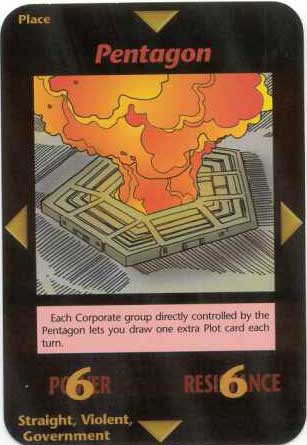 
     OBSERVEN EL NEXO WEST VIRGINIA, VIRGINIA Y PHILADELPHIA. ESTA TODO CODIFICADO PARA GLORIA DE YHWH TODOPODEROSO. ES OBVIO EL NEXO DE LA VIRGEN CON EL NUMERO DE ORO PHI PARA QUE A USTED NO QUEDE DUDA. YHWH NOS INVITA A SALIR DE BABILONIA(BABY-LON/CONFU-SION)- LON-DON/BABY-LON. BABY TIENE NEXO CON DON/DAN/JUSTICIA/JUICIO EN LA TORA. LA VIUDA PIDE JUSTICIA. YA ES HORA DE QUE LA EMPEZEMOS A RECONOCER. PHILADELPHIA/FILADELFIA TENIA UN FUERTE NEXO EN EGIPTO EN EL CONTEXTO A QUE ESTE TERMINO SIGNIFICA "UTERO DE ISIS". GENESIS TAMBIEN ES GEN DE ISIS. ES UN OBVIO NEXO CON GENESIS 3:15 QUE TODAVIA NO SE CUMPLIO EN SU PLENITUD. LA CONEXION FILADELFIA, EN APOCALIPSIS 3, EN UN CONTEXTO A LAS SIETE IGLESIAS/PLEYADES SON UN OBVIO NEXO CON EL JARDIN DEL EDEN QUE ESTABA EN ANATOLIA/ASIA MENOR/TURQUIA ADONDE ESTUVO CLAVADO EL ARCA DE NOE Y ES ADONDE NACEN JUSTAMENTE EL EUFRATES Y EL TIGRIS, RIOS ADONDE JUSTAMENTE ESTABA UBICADO BABILONIA, ACTUAL IRAK. EN APOCALIPSIS JUSTAMENE SE INTERRELACIONA A FILADELFIA CON LA "LLAVE DE DAVID". EN EL SANTORAL CATOLICO, BETZABE, LA MADRE DE SALOMON Y ESPOSA DE DAVID, EL 4 DE JULIO ES SU DIA. ESTO EXPLICA TAMBIEN INCLUSO EL FUERTE NEXO INDEPENDENCIA DE EEUU CON FILADELFIA/PHILADELPHIA. EL VATICANO MISMO ESTA DISEÑADO EN FUNCION A LA LLAVE DE DAVID E INCLUSO A LAS PLEYADES POR SUS SIETE COLINAS.
EL MENSAJE ES OBVIO, EN TODO ESTE CONTEXTO, QUE LA REFERENCIA ES EL SANTO GRIAL, OSEA EL LINAJE DE NUESTRO SEÑOR JESUCRISTO Y NUESTRA SEÑORA MADRE MARIA MAGDALENA. EN LA RESURRECCION DE NUESTRO SEÑOR, JUSTAMENTE EL MENSAJE EN EL CONTEXTO AL NUMERO 8, ES UN OBVIO NEXO CON EL NUEVO JARDIN DEL EDEN. Esto explica del porque el NEXO DE APOCALIPSIS 1:10 "DIA DEL SEÑOR" con JUAN 20 "RESURRECCION DE CRISTO". ES UN OBVIO NEXO CON EL JUBILEO y es por eso que aparecen las trompetas en APOCALIPSIS 1:10 E incluso con el SALMO 119 CUANDO NUESTRO SEÑOR AFIRMA SER EL ALFA Y EL OMEGA.
Apocalipsis
1:1 La revelación de Jesucristo, que Dios le dio, para manifestar a sus siervos las cosas que deben suceder pronto; y la declaró enviándola por medio de su ángel a su siervo Juan,
1:2 que ha dado testimonio de la palabra de Dios, y del testimonio de Jesucristo, y de todas las cosas que ha visto.
1:3 Bienaventurado el que lee, y los que oyen las palabras de esta profecía, y guardan las cosas en ella escritas; porque el tiempo está cerca.
1:4 Juan, a las siete iglesias que están en Asia: Gracia y paz a vosotros, del que es y que era y que ha de venir, y de los siete espíritus que están delante de su trono; (Siete espiritus son una referencia a las SIETE PALOMAS O PLEYADES/TAURO. UN OBVIO NEXO CON REFERENCIA A MARIA MAGDALENA QUE SIMBOLIZA AL ESPIRITU SANTO. Magdala significa "lugar de las palomas". EL ESPIRITU SANTO ES LA CUALIDAD FEMENINA DE YHWH.)
1:5 y de Jesucristo el testigo fiel, el primogénito de los muertos, y el soberano de los reyes de la tierra. Al que nos amó, y nos lavó de nuestros pecados con su sangre,
1:6 y nos hizo reyes y sacerdotes para Dios, su Padre; a él sea gloria e imperio por los siglos de los siglos. Amén.
1:7 He aquí que viene con las nubes, y todo ojo le verá, y los que le traspasaron; y todos los linajes de la tierra harán lamentación por él. Sí, amén.
1:8 Yo soy el Alfa y la Omega, principio y fin, dice el Señor, el que es y que era y que ha de venir, el Todopoderoso. (El alfa y el omega eran la primera y ultima letras del griego. ES OBVIO EL NEXO AQUI CON EL SALMO 119 EN UN CONTEXTO AL NUMERO 8/RESURRECCION/CIRCUNCISION/PACTO ABRAHAMICO QUE SE CUMPLIO JUSTAMENTE CUANDO CRISTO LE EXPRESO A MARIA MAGDALENA QUE EL IVA A "SU PADRE Y NUESTRO PADRE , SU DIOS Y NUESTRO DIOS") Comparar con GENESIS 17
162. Juan 20:17: Jesús le dijo: No me toques, porque aún no he subido a mi Padre; mas ve a mis hermanos, y diles: Subo a mi Padre y a vuestro Padre, a mi Dios y a VUESTRO DIOS.
80. Génesis 17:7: Y estableceré mi pacto entre mí y ti, y tu descendencia después de ti en sus generaciones, por pacto perpetuo, para ser tu DIOS, y el de tu descendencia después de ti.
81. Génesis 17:8: Y te daré a ti, y a tu descendencia después de ti, la tierra en que moras, toda la tierra de Canaán en heredad perpetua; y seré el DIOS de ellos.
82. Génesis 17:9: Dijo de nuevo DIOS a Abraham: En cuanto a ti, guardarás mi pacto, tú y tu descendencia después de ti por sus generaciones.
83. Génesis 17:15: Dijo también DIOS a Abraham: A Sarai tu mujer no la llamarás Sarai, mas Sara será su nombre.
1:9 Yo Juan, vuestro hermano, y copartícipe vuestro en la tribulación, en el reino y en la paciencia de Jesucristo, estaba en la isla llamada Patmos, por causa de la palabra de Dios y el testimonio de Jesucristo. (En el mismo nombre JUAN/JOHN esta en CLAVE KABALISTICAMENTE EN LA GEMATRIA EN INGLES EL GRIAL Y LA INDEPENDENCIA DE EEUU.)
1:10 Yo estaba en el Espíritu en el día del Señor, y oí detrás de mí una gran voz como de trompeta, (JUBILEO CLARO. COMPARAR CON LEVITICO 25)

| john in Simple Gematria Equals: 47 |
( |
j
10 |
o
15 |
h
8 |
n
14 |
) |
| grail in Simple Gematria Equals: 47 |
( |
g
7 |
r
18 |
a
1 |
i
9 |
l
12 |
) |
EN JOHN HAY ALGO CURIOSO. LAS PRIMERAS LETRAS SUMAN 33 y luego con la N se suma 47,

ESCALERA DE JACOB (ALQUIMIA)=GRIAL
102. Salmos 119:30: Escogí el camino de la VERDAD; He puesto tus juicios delante de mí.
103. Salmos 119:43: No quites de mi boca en ningún tiempo la palabra de VERDAD, Porque en tus juicios espero.
104. Salmos 119:86: Todos tus mandamientos son VERDAD; Sin causa me persiguen; ayúdame.
105. Salmos 119:142: Tu justicia es justicia eterna, Y tu ley la VERDAD.
106. Salmos 119:151: Cercano estás tú, oh Jehová, Y todos tus mandamientos son VERDAD.
107. Salmos 119:160: La suma de tu palabra es VERDAD, Y eterno es todo juicio de tu justicia. Sin


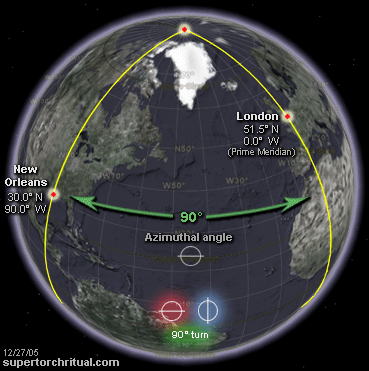
La conexion 911 con LONDRES, en contexto al NUMERO 8, aparentemente tiene nexo CON LA NACION DE LA REINA DE LOS MARES. UN FUERTE NEXO ESOTERICO CON MARIA MAGDALENA.
LA CONEXION 911, CON EL NUMERO 77 Y EL NUMERO 8, EN CONTEXTO A LONDRES TIENE UN FUERTE NEXO ESOTERICO CON MARIA MAGDALENA Y EL SANTO GRIAL.
|
|
|
|
Reply |
Message 148 of 306 on the subject |
|
| phi in Simple Gematria Equals: 33 |
( |
p
16 |
h
8 |
i
9 |
) |
| ophir in Simple Gematria Equals: 66 |
( |
o
15 |
p
16 |
h
8 |
i
9 |
r
18 |
) |
66=33X2
55. Mateo 23:14: ¡Ay de vosotros, escribas y fariseos, hipócritas! porque devoráis las casas de las VIUDAs, y como pretexto hacéis largas oraciones; por esto recibiréis mayor condenación.
56. Marcos 12:40: que devoran las casas de las VIUDAs, y por pretexto hacen largas oraciones. Estos recibirán mayor condenación.
65. Lucas 20:47: que devoran las casas de las VIUDAs, y por pretexto hacen largas oraciones; éstos recibirán mayor condenación.
¿"Devoran la casas de las viudas" no es una alusion a que devoran la casa/linaje de la viuda? ¿Porque Jesucristo incluso relaciona la viuda con JUAN MARCOS en Hechos 12:12?
1. Hechos 12:12: Y habiendo considerado esto, llegó a casa de María la madre de Juan, el que tenía por sobrenombre MARCOS, donde muchos estaban reunidos orando.
Es obvio que MARIA LA MADRE DE JUAN ES LA VIUDA.
¿PORQUE SE RELACIONA LA VIUDA CON LA EXPULSION DE LOS MERCADERES DEL TEMPLO? ¿HAY UNA CONSPIRACION CONTRA LA VIUDA? ¿QUE PIENSA USTED?
PHI=NUMERO DE ORO=1.618033
FI=PHI=NUMERO DE ORO=1.618033
171. Salmos 45:9: Hijas de reyes están entre tus ilustres;Está la REINA a tu diestra con oro de OPHIR.
SO-FI-A/SOPHIA/S-OPHI-A/SO-PHI-A/SABIDURIA/S-OFI-A/FI-L-OFI-A
REINA VESTIDA CON ORO DE O-PHI-R/OFIR
ESTA TODO CALCULADO. SALMOS 45:9, EN CLAVE, HACE REFERENCIA AL NUMERO DE ORO PHI PARA GLORIA DEL CREADOR DEL UNIVERSO Y DE CRISTO Y MARIA MAGDALENA.
MARTE Y VENUS ESTAN DISEÑADOS EN FUNCION AL SANTO GRIAL (NUMERO DE ORO PHI=1.618033)
|
|
|
|
Reply |
Message 149 of 306 on the subject |
|
|
|
|
Reply |
Message 150 of 306 on the subject |
|
Venus y la Tierra danzan en sincronía matemática y geométrica en el salón del Espacio, al son de la sutilísima vibración de la música de las esferas, pues esferas son. El milenario mito de la llamada "Música de las Esferas" es mito mientras no se comprende qué es o a qué se refiere. Es como si una persona no reconociera que los instrumentos musicales suenan y por eso concluye que la "música de los instrumentos" es mito. Sólo le basta escuchar, sentir, vibrar y comprender. Nosotros estamos en una de esas esferas: el Planeta Tierra, aunque si pensamos un poco comprenderemos que es normal que sea posible que no conozcamos la maravilla en la que estamos inmersos ni que participemos activamente en ella, como aquel espectador que está de gratis en un maravilloso concierto y él mismo es un instrumento y se queda dormido, pero no porque la música sea aburrida sino porque no sabe que está ahí.
Cada 8 años, que son 8 órbitas de la Tierra y 13 de Venus, ambos planetas se encuentran 5 veces en sus puntos más cercanos, al mismo lado del Sol, 5 puntos que son equidistantes y que forman los 5 vértices de una estrella de 5 puntas. Puedes pulsar sobre la imagen para ver la animación.
|
|
|
|
Si continúas observando podrás comprobar cómo Venus y la Tierra continúan trazando la figura pentagonal, aunque ya no desde el mismo punto que la anterior. De hecho, comienzan una nueva 2,33 días antes que la anterior. La actual la comenzaron el 8 de junio de 2004 y termina el 6 de junio de 2012. Esto significa que esa estrella de 5 puntas gira también alrededor del Sol hasta dar una vuelta en 1.252 años: un Ciclo mayor compuesto por 156 subciclos Pentagonales (1.252 órbitas de la Tierra y 2.035 de Venus). Así es como los planetas crean los Ciclos Cósmicos. 1.252 años son 457.457 días, que es prácticamente 676 x 676 ó 26x26x26x26 ó (13+13)x(13+13)x(13+13)x(13+13) días.
Aquí puedes verlo de otra manera comenzando desde el 8 de junio de 2004 (cuando se produjo un tránsito de Venus) hasta el 6 de junio de 2012 en que se produce otro tránsito. Puedes hacer click sobre la escena repetidamente.
|
Los números 5, 8 y 13 son números consecutivos de la serie Fibonacci en la que cada número dividido por su anterior tiende al valor del número Phi, el que marca la llamada "proporción divina" de ciertos elementos de la Naturaleza, por no decir muchos o todos, y entre los cuales están las propias piezas que componen el esqueleto de nuestros cuerpos: los huesos. En la vigésima división de la serie Fibonacci, entre los números 6.765 y 4.181, se obtiene un valor de phi afinado hasta el sexto decimal: 1'6180339. También se puede ver que los números de la serie Fibonacci 6.765 y 4.181 como días terrestres convertidos a Tzolkins son 26 y 16 Tzolkin, y mientras el año de la Tierra (365 días) es 1,62 veces más largo que el de Venus (225 días), siendo 1,62 el redondeo de 1,618 que es el valor de Phi, en el ciclo sinódico Venus da 2'6 órbitas y la Tierra da 1'6 (fracciones de 26 y 16). Y por fin, reproduciendo los tres números de la serie Fibonacci 5, 8 y 13 en el ciclo pentagonal resulta que 5 es el número de encuentros entre La Tierra y Venus durante 8 órbitas de la Tierra y 13 de Venus.
Viendo desde el planeta Tierra, desde el meridiano del mediodía, sin que gire el planeta (pero sí trasladándose) y acelerando mucho el movimiento de los astros hasta que en 20 segundos transcurrieran 8 años, podríamos ver a Venus realizar 5 movimientos retrógrados cada 8 años, 2 en forma de lazo, 1 en zig zag (cruzando la eclíptica) y otros 2 de nuevo en forma de lazo (casi simétricos a los dos primeros). Los trazos en forma de lazo los realiza por encima o debajo de la eclíptica según ande circulando por el nodo superior o inferior de su órbita (inclinada respecto a la de la Tierra). Empleando una expresión metafórica, son las Curvas de Venus.

También podemos verlas como las letras gráficas del lenguaje venusiano. Tales trazos derivan gradualmente en el cielo terrestre cada 8 años en sentido contrario al del Sol ante el fondo fijo de las estrellas y las constelaciones, de modo que desde hace unos 100 años, el movimiento en zig zag de Venus ha venido ocurriendo sobre la constelación de Orión.
El 13 es número basico en el Ciclo Pentagonal, pues es el número de órbitas de Venus, de modo que en 13 Ciclos Pentagonales Venus da 169 órbitas (13x13). Este ciclo de 13 ciclos Pentagonales es 37.960 días durante los que Venus realiza 65 ciclos sinódicos (o alineamientos con la Tierra) y en los que también intervienen 146 ciclos del Tzolkin 146 e incluso 104 del Haab (103,96 años de 365,2422 años). Vemos que el el 65 y el 104 son múltiplos del 13.
13 Pentagonales = 13 x 2920 días = 37.960 días
65 ciclos sinódicos = 65 x 584 días = 37.960 días
104 Haabs = 104 x 365 días = 37.960 días
146 Tzolkines = 146 x 260 días = 37.960 días
A su vez este ciclo de 37.960 días ó 13 Ciclos Pentagonales es una unidad de otros ciclos mayores.
Ver también Ciclo Octogonal de Venus.
Deseas hacer algún comentario?
Blog sobre la Dinámica de Venus
|
|
|
|
Reply |
Message 151 of 306 on the subject |
|
Tranquilos, que nadie se asuste... no vamos a sufrir una invasión de demonios del averno (al menos eso espero  ). Me he permitido la licencia de usar ese titular por un motivo concreto. Hoy, 21 de junio, es la fecha en el hemisferio norte (en el sur ocurre al contrario) del solsticio de verano. Arranca oficialmente la estación más calurosa del año y hoy el día tiene más horas de luz que ningún otro. Como ya comentamos en el blog en su momento, los antiguos romanos contaban entre su nutrido panteón de dioses con la figura de Jano (Janus en latín), el dios de los solsticios. Era también el dios de las puertas, de todos los inicios y de los finales. Poseía una rica iconografía –de la que algún día hablaremos más a fondo–, en la que lo más destacado era su representación con dos rostros, cada uno de ellos mirando en direcciones opuestas. De ahí que se le denomine también como Jano bifronte.
En lo que respecta a la temática de este blog, lo que más nos interesa de él es que los collegia fabrorum (las cofradías de constructores romanos) le rindieron una devoción especial, siendo su patrón.
Como decía más arriba, se consideraba a Jano el dios de los solsticios, las «puertas solsticiales» o «puertas del cielo». Así, el solsticio de verano era llamado janua inferni, la "puerta del infierno" o de los hombres, y el solsticio de invierno, janua coeli, la "puerta de los dioses". Además de patrón de los constructores, Jano era para los romanos el dios de la iniciación a los misterios. Era la «puerta», no sólo solsticial, sino también iniciática.

Esta devoción se transmitió a los canteros medievales y pasó a la iconografía y la religión cristiana bajo el culto a los dos «san Juan»: el Bautista, que tiene su festividad el 24 de junio (solsticio de verano), y el Evangelista, que tiene su festividad el 27 de diciembre (solsticio de invierno). Hay casos muy significativos en este sentido, en los que esta pervivencia es evidente. Jean Hani, profesor emérito en la Universidad de Amiens, menciona un notable ejemplo en la basílica francesa de Saint-Remi, en Reims: «En una vidriera aparece un único san Juan, que engloba en una sola figura al Precursor y al Evangelista, fusión subrayada por la presencia, sobre la cabeza, de dos girasoles (los dos solsticios) dirigidos en sentido opuesto: una especie de Jano cristiano, en suma».
No es el único caso. Otro día hablaremos de la presencia de zodiacos en iglesias y catedrales medievales. Hoy es suficiente con comentar que junto a algunos de estos zodiacos, generalmente esculpidos en las fachadas de los templos, y a ambos lados de Cristo, aparecen en ocasiones los "dos Juanes". Están marcando, de este modo, las fechas de los solsticios. ¿Qué simboliza esto? Como bien explica de nuevo Hani:
Del mismo modo que ellos ‘abren’ los dos períodos de la historia marcados por las dos venidas del Salvador, igualmente, en el plano cósmico, ‘abren’ las dos fases del ciclo anual, símbolo reducido del ciclo universal del tiempo y la historia; y en esta función, han reemplazado, desdoblándolo por así decirlo, al Jano bifronte, del que los Collegia fabrorum, antepasados de los constructores de catedrales, celebraban la fiesta en los dos solsticios.
Además, la división en la janua inferni y la janua coeli aparece también en algunas representaciones medievales del Juicio Final, en las que se divide la escena en dos partes: por un lado, los condenados que van al infierno –descienden, igual que el Sol a partir del solsticio de verano, o janua inferni– y, por otro, aquellos que se salvan –ascienden, al igual que el Sol tras el solsticio de invierno, o janua coeli.
En los templos medievales las representaciones de Jano son bastante habituales –además de los casos mencionados–, sobre todo en los zodiacos. Os pongo las imágenes de varios ejemplos. La primera corresponde a una representación del dios existente en la catedral de Amiens, en una serie de los trabajos de los meses. La segunda y la tercera proceden de la catedral de Chartres, también en Francia. En ésta última imagen Jano –aunque no se aprecia en la fotografía– está rodeado de símbolos del zodiaco.
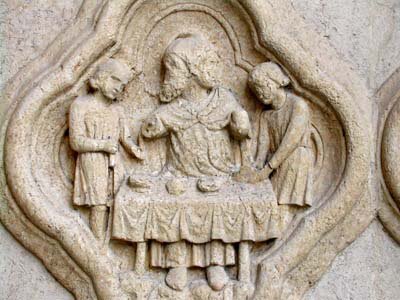


Por supuesto, y como algunos de vosotros ya habréis adivinado, este culto a Jano, y más tarde a los «dos san Juan» en las logias medievales, se conserva en la masonería actual, pues tanto las fiestas solsticiales como los dos «Juanes» tienen gran importancia.·.
Eso es todo. ¡Feliz solsticio! y ¡Feliz noche de San Juan el sábado! (ojito con las hogueras) 
|
|
|
|
Reply |
Message 152 of 306 on the subject |
|
|
  
 por Admin el Mar Jun 22, 2010 10:17 am por Admin el Mar Jun 22, 2010 10:17 am
A LA G:. D:. G:. A:. D:. U:.
Libertad * Igualdad * Fraternidad
S:.F:.U:.
EL SOLSTICIO DE VERANO, S. JUAN, JANUA, JANO
A todos los Hermanos, a cada uno según su grado y condición.:
Solsticio, derivado del latín solstitium, sol (el astro) y stitum (detención). La detención del sol que marca el tiempo en que este se halla más lejos del Ecuador y en que parece quedarse varado en los mares del universo unos días. El solsticio de verano se produce entre los días 21 y 22 de junio en el Hemisferio Norte cuando la distancia angular del Sol al Ecuador celeste es máxima. .Con el, el misterio de los cielos, la magnitud de los espacios cósmicos que nunca dejan de ser fuente de curiosidad para los hombres, toma cuerno en un día que no es como los demás. Un día donde la naturaleza, el hombre y las estrellas se disponen a celebrar una fiesta cargada de gran poder y magia. Es momento de fecundidad, de cosechas, de gracias por los dones recibidos y de acopios para pasar el otoño y el invierno.
También sabemos que en la tradición hindú, la fase ascendente se pone en relación con el deva-yna, y la fase descendente con el pitr- yna; por consiguiente, en el Zodíaco el signo de Cáncer, correspondiente al solsticio de verano, es la “puerta de los hombres”, que da acceso alpitr- yna, y el signo de Capricornio, correspondiente al solsticio de invierno, es la “puerta de los dioses “, que da acceso al deva-yána.
Los antecedentes en la celebración solsticial cabria hallarlos entre otros, en la celebración celta del Beltaine, o del bello fuego, o también fuego de Bel, ceremonia realizada en honor del Dios Belenos. Era el momento propicio en que los druidas purificaban el ganado y hacían plegarias por un año fructífero.
Los griegos dedicaban esta festividad al Dios Apolo y los romanos a la Diosa de la guerra Minerva y en todos los casos el fuego y las hogueras eran la herramienta central y simbólica.
Al otro lado del Mar Ártabro los festivales primordiales incaicos estaban en relación a los solsticios siendo majestuosa la celebración del Inti-Raymo o fiesta del Sol que el 24 de junio tenia lugar en la impresionante explanada de Sacsahuman en las cercanías del Cuzco imperial, recinto inaccesible y enigmático.
El cristianismo en su esfuerzo por hacer suyas las numerosas fuerzas que tienen su manifestación en esta fecha solar mágica optó por dedicarla a San Juan. San Juan Bautista es el autentico príncipe del santoral cristiano. Es el único santo del que se celebra su nacimiento y no la muerte.
Así nos lo advierte S. Agustín, afirmando que fue santificado en el vientre de su madre y vino al mundo sin culpa. Hijo de ancianos acerdote, Zacarías, casado con una mujer tan santa como estéril al nacer curó a su padre de una mudez que se había abatido como castigo por su poca diligencia en acreditar el anuncio del Ángel Gabriel cuando le avisó del estado de gravidez de su esposa. Al menos así es como nos lo narra Lucas en su Evangelio.
Juan es nacido el portavoz de la Redención. Por ello su festividad el 24 de junio es y se la asimila a una fiesta solar. De luz y de fuego. San Juan necesariamente encarna sobre si la liturgia del solsticio de verano porque para los cristicos era que hacer imposible erradicar de la práctica tradicional los más antiguos ritos de la Humanidad escenificados en la mas grande de todas las fiestas, las ancestrales celebraciones solares.
Concurren en favor de Juan su perfil juvenil y el atractivo ambiguo del personaje. Un hermoso ejemplar andrógino bellamente representado por Leonardo da Vinci en el siglo XVI.. En el estamos ante un Sol menor que abre camino al Sol mayor, Cristo. También nuevamente ante la dualidad, en ambos personajes se contraponen la muerte y la resurrección.
Juan con rebelde gallardía juvenil se muestra firme en su misión ante el rey Herodes preparando el camino de su Señor. Es una voz que dama en el desierto y que no calla. No calla ante la opresión y no gira el rostro ante los abusos de poder aunque no le afectasen personalmente.
Con desobediencia lozana, casi con inconsciencia púber, tanto insiste que, como suele suceder con los díscolos legitimados por la razón, su cabeza terminará sobre una bandeja de plata, en este caso como ofrenda obscena a una sensual y libidinosa bailarina, Salomé. Al menos es lo que nos refiere Flavio Josefo. A partir de ahí, ya mártir, el nombre de Juan se utiliza por el mundo cristiano impuesto con la fuerza positiva del mismo sol, con la viveza del fuego y la fecundidad de una virtud invencible.
En la Edad Media el ya entonces San Juan de los cristianos fue adoptado como Santo Patrón de los Collegia Fabrorum de artesanos y luego de los constructores, masones operativos desde donde paso su patronazgo a la masonería especulativa desde su mismo surgimiento a principios del Siglo XVIII.
Hay una corriente de estudiosos de la Masonería que asocia la fiesta solsticial masónica con San Juan el Limosnero, Gran Maestro de los Caballeros de San Juan de Jerusalén, Orden creada en el siglo XIII.
Juan el Limosnero, el patrón mas amado y venerado de los Templarios era patriarca de Antioquía . Juan de Antioquia, no duda en tiempos de fervor y cruzadas, en abandonar su posición de privilegio para dirigirse en el 550 a Jerusalén. Allí, en las andas y arenosas tierras bíblicas, se prodigó en socorrer a los peregrinos, creo una fraternidad para curar a los cristianos enfermos y heridos, ayudó económicamente a los que viajaban a Tierra Santa y combatían a los moros, o a los visitaban el Santo Sepulcro. La Iglesia Católica lo canonizó bajo el nombre de Juan el Limosnero o Juan de Jerusalén. De alguna forma se le considera el precursor de la Cruz Roja Internacional. También se afirma que el puesto de Hermano Hospitalario, que es regular en los cuadros logiales de nuestra Orden tanto en sus símbolos como en sus funciones son reminiscencias de este personaje.
Para los griegos los solsticios eran sinónimo de puertas siendo el solsticio de verano la puerta de los hombres. Etimológicamente la palabra Juan se relaciona con el vocablo latino Janua cuya traducción es puerta y del que se deriva januarius, enero, o iniciación. Sin salir de este contexto cabe subrayar que el significado de puerta lo tiene también la letra griega Delta que tiene forma de triangulo y que la era la que utilizaban los antiguos en las puertas de acceso a los templos iniciáticos.. Los cristianos sustituyeron el Janua o Janus etrusco y su equivalente Saturno de los frigios y los griegos con San Juan, nombre que en una de sus acepciones se interpreta como la gracia o el don de Dios. Dentro de la amplia onomástica cristiana de juanes es el Bautista el que representa al solsticio de verano.
Jano como personaje mitológico asoma inicialmente en la mitología hindú primitiva. Como dios de la naturaleza era guía de las almas y como a Osiris se le llama Sol teniendo bajo su custodia las puertas de Oriente y Occidente. Janus para los romanos era el dios que presidía el ingreso del Sol en los hemisferios celestes. El Dios de la iniciación a los misterios y al mismo tiempo el dios de las corporaciones de artesanos. Carácter a la vez iniciático y operativo.
Desde siempre la Francmasonería ha asimilado a Janus dentro de su estructura simbólica y derivado de elloe stá la importancia que el pueblo masónico concede a las fiestas solsticiales.
En el caso de la del verano, dedicada al Reconocimiento. Diversos autores masónicos hacen referencia a que la utilización del termino Logia de San Juan se remonta al tiempo de las cruzadas cuando los caballeros masones se unieron a sus similares de la Orden de San Juan de Jerusalén más conocidos como templarios y que e ngesto de solidaridad a los principios de estos aceptaron como propio a su patrón. Por sincronía todas las Logias de las corporaciones de constructores pasaron a llamarse Logias de San Juan.
Comúnmente se asume como patronos de la masonería universal conocida como simbólica o azul a Juan Bautista y a Juan Evangelista en los que se representa las dos fiestas solsticiales emanadas de la antigüedad, el primero de la del verano y de la del invierno, el segundo.
La tradición masónica las ha hecho celebraciones obligatorias y se auspicia como reconocimiento de su impronta ceremonial, el momento adecuado para llevar a cabo Asamblea General en Grandes Logias y Tenida Magna y Solemne en Logias regulares. Asimismo es preceptivo en el solsticio de verano la elección de Grandes Maestros, Venerables y Dignatarios.
Jano, dios bifronte, arcano, esotérico y enigmático. Fija una de sus caras en la tradición del pasado y la otro indica el rumbo hacia el devenir. Es una exhortación permanente a quien lo observa y lo comprende a asumir con dignidad y valor su tarea presente, aprovechando la experiencia de lo acaecido para anticiparse al destino. Es quizás esa cualidad visionaria encerrada en la alegoría de Jano el origen y resumen temporal y espacial de la Masonería desde una perspectiva iniciática.
De ella se nutre la Orden en lo profundo de su ser, en su esencia real y es a la vez el arma más poderosa conque se dota para garantizar su teleología inmanente.
El sol es por si solo un símbolo masónico de suma importancia. La Logia en esencia es una simbolización del Universo con un territorio enmarcado por piso terrenal y su techo celestial. El Venerable Maestro ilumina simbólicamente el Taller con su sabiduría cual el Sol que comienza su esplendor desde el Oriente. El Primer Vigilante simboliza al Sol en el ocaso al Occidente y el Segundo Vigilante simboliza el sol al Mediodía en la escala del tránsito. El medio natural de acción de un masón es la naturaleza y los fenómenos naturales son obligada fuente de estudio e inspiración. ¿Por ello, como ser ajenos al fenómeno del recorrido elíptico del Astro rey e ignorar la coincidencia de que sus puntos mas lejanos y distantes del Ecuador marcan cambios naturales de dos estaciones opuestas, verano e invierno?.
Jano nuevamente, la dualidad, símbolos también de la contradicción, lo bipolar representados estos conceptos opuestos en el piso cuadriculado delTaller, de la Logia, el blanco y el negro.
Preveer y preparar el porvenir, basando el trabajo presente en la experiencia y el conocimiento del pasado ha sido siempre la privilegiada tarea de la francmasonería. Una tarea empeñada en el cumplimiento de unos deberes y obligaciones que por su propia naturaleza no tienen principio ni fin, renovándose siempre en una noche mágica de solsticio de verano la apertura de esas puertaS invisibles del otro lado del espejo que nos instruyen al conocimiento del futuro y a las dimensiones prodigiosas de la realidad.
Queridos hermanos que el transito solsticial ilumine vuestros corazones con la llama de la pureza y el amor y alumbre en vuestras mentes la razón y la verdad en vuestras vidas.
Adaro
|
|
|
|
Reply |
Message 153 of 306 on the subject |
|
EXODO 14 Y 15
Capítulo 14
Los israelitas cruzan el Mar Rojo
14:1 Habló Jehová a Moisés, diciendo: 14:2 Di a los hijos de Israel que den la vuelta y acampen delante de Pi-hahirot, entre Migdol y el mar hacia Baal-zefón; delante de él acamparéis junto al mar. 14:3 Porque Faraón dirá de los hijos de Israel: Encerrados están en la tierra, el desierto los ha encerrado. 14:4 Y yo endureceré el corazón de Faraón para que los siga; y seré glorificado en Faraón y en todo su ejército, y sabrán los egipcios que yo soy Jehová. Y ellos lo hicieron así. 14:5 Y fue dado aviso al rey de Egipto, que el pueblo huía; y el corazón de Faraón y de sus siervos se volvió contra el pueblo, y dijeron: ¿Cómo hemos hecho esto de haber dejado ir a Israel, para que no nos sirva? 14:6 Y unció su carro, y tomó consigo su pueblo; 14:7 y tomó seiscientos carros escogidos, y todos los carros de Egipto, y los capitanes sobre ellos. 14:8 Y endureció Jehová el corazón de Faraón rey de Egipto, y él siguió a los hijos de Israel; pero los hijos de Israel habían salido con mano poderosa. 14:9 Siguiéndolos, pues, los egipcios, con toda la caballería y carros de Faraón, su gente de a caballo, y todo su ejército, los alcanzaron acampados junto al mar, al lado de Pi-hahirot, delante de Baal-zefón. 14:10 Y cuando Faraón se hubo acercado, los hijos de Israel alzaron sus ojos, y he aquí que los egipcios venían tras ellos; por lo que los hijos de Israel temieron en gran manera, y clamaron a Jehová. 14:11 Y dijeron a Moisés: ¿No había sepulcros en Egipto, que nos has sacado para que muramos en el desierto? ¿Por qué has hecho así con nosotros, que nos has sacado de Egipto? 14:12 ¿No es esto lo que te hablamos en Egipto, diciendo: Déjanos servir a los egipcios? Porque mejor nos fuera servir a los egipcios, que morir nosotros en el desierto. 14:13 Y Moisés dijo al pueblo: No temáis; estad firmes, y ved la salvación que Jehová hará hoy con vosotros; porque los egipcios que hoy habéis visto, nunca más para siempre los veréis. 14:14 Jehová peleará por vosotros, y vosotros estaréis tranquilos. 14:15 Entonces Jehová dijo a Moisés: ¿Por qué clamas a mí? Di a los hijos de Israel que marchen. 14:16 Y tú alza tu vara, y extiende tu mano sobre el mar, y divídelo, y entren los hijos de Israel por en medio del mar, en seco. 14:17 Y he aquí, yo endureceré el corazón de los egipcios para que los sigan; y yo me glorificaré en Faraón y en todo su ejército, en sus carros y en su caballería; 14:18 y sabrán los egipcios que yo soy Jehová, cuando me glorifique en Faraón, en sus carros y en su gente de a caballo. 14:19 Y el ángel de Dios que iba delante del campamento de Israel, se apartó e iba en pos de ellos; y asimismo la columna de nube que iba delante de ellos se apartó y se puso a sus espaldas, 14:20 e iba entre el campamento de los egipcios y el campamento de Israel; y era nube y tinieblas para aquéllos, y alumbraba a Israel de noche, y en toda aquella noche nunca se acercaron los unos a los otros. 14:21 Y extendió Moisés su mano sobre el mar, e hizo Jehová que el mar se retirase por recio viento oriental toda aquella noche; y volvió el mar en seco, y las aguas quedaron divididas. 14:22 Entonces los hijos de Israel entraron por en medio del mar,  en seco, teniendo las aguas como muro a su derecha y a su izquierda. 14:23 Y siguiéndolos los egipcios, entraron tras ellos hasta la mitad del mar, toda la caballería de Faraón, sus carros y su gente de a caballo. 14:24 Aconteció a la vigilia de la mañana, que Jehová miró el campamento de los egipcios desde la columna de fuego y nube, y trastornó el campamento de los egipcios, 14:25 y quitó las ruedas de sus carros, y los trastornó gravemente. Entonces los egipcios dijeron: Huyamos de delante de Israel, porque Jehová pelea por ellos contra los egipcios. 14:26 Y Jehová dijo a Moisés: Extiende tu mano sobre el mar, para que las aguas vuelvan sobre los egipcios, sobre sus carros, y sobre su caballería. 14:27 Entonces Moisés extendió su mano sobre el mar, y cuando amanecía, el mar se volvió en toda su fuerza, y los egipcios al huir se encontraban con el mar; y Jehová derribó a los egipcios en medio del mar. (La resurreccion de Cristo fue al amanecer segun JUAN 20:1. ¿CASUALIDAD QUE APARECE CON EL MARIA MAGDALENA? ES OBVIA LA ANALOGIA ESOTERICA DEL MAR CON REFERENCIA A MARIA MAGDALENA, ENCIMA CON EL COLOR ROJO Y ENCIMA TODAVIA CON NEXO CON LOS GENTILES)14:28 Y volvieron las aguas, y cubrieron los carros y la caballería, y todo el ejército de Faraón que había entrado tras ellos en el mar; no quedó de ellos ni uno. 14:29 Y los hijos de Israel fueron por en medio del mar, en seco, teniendo las aguas por muro a su derecha y a su izquierda. 14:30 Así salvó Jehová aquel día a Israel de mano de los egipcios; e Israel vio a los egipcios muertos a la orilla del mar. 14:31 Y vio Israel aquel grande hecho que Jehová ejecutó contra los egipcios; y el pueblo temió a Jehová, y creyeron a Jehová y a Moisés su siervo. en seco, teniendo las aguas como muro a su derecha y a su izquierda. 14:23 Y siguiéndolos los egipcios, entraron tras ellos hasta la mitad del mar, toda la caballería de Faraón, sus carros y su gente de a caballo. 14:24 Aconteció a la vigilia de la mañana, que Jehová miró el campamento de los egipcios desde la columna de fuego y nube, y trastornó el campamento de los egipcios, 14:25 y quitó las ruedas de sus carros, y los trastornó gravemente. Entonces los egipcios dijeron: Huyamos de delante de Israel, porque Jehová pelea por ellos contra los egipcios. 14:26 Y Jehová dijo a Moisés: Extiende tu mano sobre el mar, para que las aguas vuelvan sobre los egipcios, sobre sus carros, y sobre su caballería. 14:27 Entonces Moisés extendió su mano sobre el mar, y cuando amanecía, el mar se volvió en toda su fuerza, y los egipcios al huir se encontraban con el mar; y Jehová derribó a los egipcios en medio del mar. (La resurreccion de Cristo fue al amanecer segun JUAN 20:1. ¿CASUALIDAD QUE APARECE CON EL MARIA MAGDALENA? ES OBVIA LA ANALOGIA ESOTERICA DEL MAR CON REFERENCIA A MARIA MAGDALENA, ENCIMA CON EL COLOR ROJO Y ENCIMA TODAVIA CON NEXO CON LOS GENTILES)14:28 Y volvieron las aguas, y cubrieron los carros y la caballería, y todo el ejército de Faraón que había entrado tras ellos en el mar; no quedó de ellos ni uno. 14:29 Y los hijos de Israel fueron por en medio del mar, en seco, teniendo las aguas por muro a su derecha y a su izquierda. 14:30 Así salvó Jehová aquel día a Israel de mano de los egipcios; e Israel vio a los egipcios muertos a la orilla del mar. 14:31 Y vio Israel aquel grande hecho que Jehová ejecutó contra los egipcios; y el pueblo temió a Jehová, y creyeron a Jehová y a Moisés su siervo.
Capítulo 15
Cántico de Moisés y de María
15:1 Entonces cantó Moisés y los hijos de Israel este cántico  a Jehová, y dijeron: Cantaré yo a Jehová, porque se ha magnificado grandemente; Ha echado en el mar al caballo y al jinete. 15:2 Jehová es mi fortaleza y mi cántico, Y ha sido mi salvación. a Jehová, y dijeron: Cantaré yo a Jehová, porque se ha magnificado grandemente; Ha echado en el mar al caballo y al jinete. 15:2 Jehová es mi fortaleza y mi cántico, Y ha sido mi salvación.   Este es mi Dios, y lo alabaré; Dios de mi padre, y lo enalteceré.15:3 Jehová es varón de guerra; Jehová es su nombre. (MARTE/GUERRA) Este es mi Dios, y lo alabaré; Dios de mi padre, y lo enalteceré.15:3 Jehová es varón de guerra; Jehová es su nombre. (MARTE/GUERRA)
15:4 Echó en el mar los carros de Faraón y su ejército; Y sus capitanes escogidos fueron hundidos en el Mar Rojo. 15:5 Los abismos los cubrieron; Descendieron a las profundidades como piedra.15:6 Tu diestra, oh Jehová, ha sido magnificada en poder; Tu diestra, oh Jehová, ha quebrantado al enemigo. 15:7 Y con la grandeza de tu poder has derribado a los que se levantaron contra ti. Enviaste tu ira; los consumió como a hojarasca. 15:8 Al soplo de tu aliento se amontonaron las aguas; Se juntaron las corrientes como en un montón; Los abismos se cuajaron en medio del mar. 15:9 El enemigo dijo: Perseguiré, apresaré, repartiré despojos; Mi alma se saciará de ellos; Sacaré mi espada, los destruirá mi mano. 15:10 Soplaste con tu viento; los cubrió el mar; Se hundieron como plomo en las impetuosas aguas. 15:11 ¿Quién como tú, oh Jehová, entre los dioses? ¿Quién como tú, magnífico en santidad, Terrible en maravillosas hazañas, hacedor de prodigios?15:12 Extendiste tu diestra; La tierra los tragó.15:13 Condujiste en tu misericordia a este pueblo que redimiste; Lo llevaste con tu poder a tu santa morada. 15:14 Lo oirán los pueblos, y temblarán; Se apoderará dolor de la tierra de los filisteos. 15:15 Entonces los caudillos de Edom se turbarán; A los valientes de Moab les sobrecogerá temblor; Se acobardarán todos los moradores de Canaán. 15:16 Caiga sobre ellos temblor y espanto; A la grandeza de tu brazo enmudezcan como una piedra; Hasta que haya pasado tu pueblo, oh Jehová, Hasta que haya pasado este pueblo que tú rescataste. 15:17 Tú los introducirás y los plantarás en el monte de tu heredad, En el lugar de tu morada, que tú has preparado, oh Jehová, En el santuario que tus manos, oh Jehová, han afirmado. 15:18 Jehová reinará eternamente y para siempre.
15:19 Porque Faraón entró cabalgando con sus carros y su gente de a caballo en el mar, y Jehová hizo volver las aguas del mar sobre ellos; mas los hijos de Israel pasaron en seco por en medio del mar.
15:20 Y María la profetisa, hermana de Aarón, tomó un pandero en su mano, y todas las mujeres salieron en pos de ella con panderos y danzas.
15:21 Y María les respondía:
Cantad a Jehová, porque en extremo se ha engrandecido;
Ha echado en el mar al caballo y al jinete.
El agua amarga de Mara
15:22 E hizo Moisés que partiese Israel del Mar Rojo, y salieron al desierto de Shur; y anduvieron tres días por el desierto sin hallar agua.
15:23 Y llegaron a Mara, y no pudieron beber las aguas de Mara, porque eran amargas; por eso le pusieron el nombre de Mara.
15:24 Entonces el pueblo murmuró contra Moisés, y dijo: ¿Qué hemos de beber?
15:25 Y Moisés clamó a Jehová, y Jehová le mostró un árbol; y lo echó en las aguas, y las aguas se endulzaron. Allí les dio estatutos y ordenanzas, y allí los probó;
15:26 y dijo: Si oyeres atentamente la voz de Jehová tu Dios, e hicieres lo recto delante de sus ojos, y dieres oído a sus mandamientos, y guardares todos sus estatutos, ninguna enfermedad de las que envié a los egipcios te enviaré a ti; porque yo soy Jehová tu sanador.
15:27 Y llegaron a Elim, donde había doce fuentes de aguas, y setenta palmeras; y acamparon allí junto a las aguas. |
|
|
|
Reply |
Message 154 of 306 on the subject |
|
|
7/7/7: Solar Resurrection Day
July 7, 2007
by Goro (goroadachi.com)
What's the deal with '7/7/7'? Well, it's all about Solar Resurrection... again.
So the Sun is thus doubly 'dead' on 7/7/07, signifying a moment of transition from life to death and back to life. It's Resurrection in the 'Valley of the Sun', like the nickname of the capital of Arizona, Phoenix.

The Sun also 'dies' on the winter solstice when the Sun is at its lowest point in the sky. In 2006 it was commemorated by the space shuttle Discovery STS-116 landing in Florida, the 'Sunshine State' (12/22/06).
From a galactic perspective, the Sun crossed the Galactic Equator on the winter solstice and the Galactic Meridian on December 8-9, exactly when Discovery STS-116 was launched.
- Dec 09 - Discovery STS-116 launch: The Sun crossing the Galactic Meridian
- Dec 22 - Discovery STS-116 landing: The Sun crossing the Galactic Equator
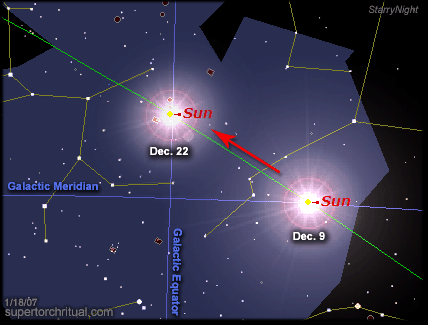

[image by Gary Palmer via spaceweather.com]
The Galactic solstice-Sun alignment is closely associated with the end date of the Mayan calendar, winter solstice 2012, when Sunspot Cycle 24 is projected to peak. The Galactic Meridian alignment coincided with the release of Mel Gibson's 'Apolcalypto', all about the end of the Mayan civilization.

The Sun was strangely active as well...

 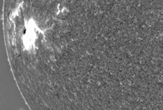
The Sun would cross the Galactic Meridian again on June 7-8 on the opposite side of the sky/ecliptic.

It coincided with the Venus Transit (= 'Grail/Messianic conception') in 2004 and the launch of Atlantis STS-117 this year.
Atlantis returned only a day after the summer solstice, when the Sun 'died' for the Southern Hemisphere.

It was another death/life Resurrection moment - acknowledged or foreshadowed by the shuttles' solstice axis expressing 'coming out of the egg' (back to life) via the STS-116 mission patch and such.

And it was Prince William, a 'Once and Future King' (Arthur) figure, 'reborn' on his summer-solstice birthday. Atlantis landed at Edwards AFB to highlight Paris, where his mother Princess Diana died in 1997. Edwards is aligned with the 'Tower Axis' (Eiffel Tower, Champ de Mars) extended from Paris.

On the 'Tower Axis' is also found the crash site of NASA's Genesis (9/8/04). It went to the Sun and came back with solar wind samples. The crash therefore signifies the Sun hitting the bottom, again expressing the phoenix death/resurrection theme.
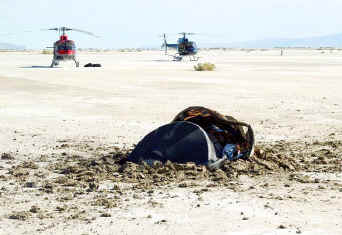
The astronomical/astrological symbol of the Sun looks like this:

It also signifies the 'Monad' - known to the Greek philosophers as 'The First', 'The Seed', 'The Essence', 'The Builder', and 'The Foundation'. Or in other words... Genesis.
Within weeks of the Genesis crash, U2 released the first single 'Vertigo' off their new album 'How to Dismantle An Atomic Bomb'. 'Vertigo' is the name of the company which provided the helicopters that were supposed to catch Genesis midair (see picture above). One of those helicopters was also named 'Vertigo'.
The connection is reinforced by the lyrics of 'Vertigo' alluding to the progressive rock/pop band 'Genesis'. Their last big hit was 'I can't Dance' from their 1991 album 'We Can't Dance' which is referenced in the second verse of 'Vertigo':
The night is full of holes
Those bullets rip the sky
Of ink with gold
They twinkle as the boys play rock and roll
They know that they can't dance
At least they know

Update: Genesis, reunited and touring this year, was the first band to perform in London's Live Earth concert.
Furthermore, the 'Vertigo' video shows U2 in the desert like NASA's Genesis, performing on a Sun/Monad symbol.
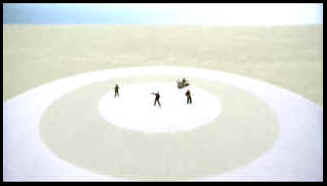
'Vertigo' was also heavily used by Apple to promote the iPod...
...showing the same Sun/Genesis symbol (the 'click wheel').

Apple's new product iPhone - widely considered the most highly anticipated consumer electronics device in history - was just released on June 29, '07, the same day as the car bomb event in London recalling the 7/7 bombings there two years ago, seemingly setting the stage for Live Earth 7/7/07... And what do we see in the Live Earth logo? The same solar symbol!

Live Earth certainly knows where it is in time (aphelion, etc.) and is the latest manifestation of the the 'Solar Resurrection' theme.
Now, whereas we see the blue sky in the Life Earth solar symbol, we see the solar symbol in the blue sky on the cover of Journey's 'Don't Stop Believing'.

The song was a major part of the enigmatic final scene of The Sopranos (HBO) that got everybody talking.

Unbeknownst to most, the episode was mostly about Solar Resurrection. So for example on Journey's 'Escape' album cover - the album of 'Don't Stop Believing' - we find the scarab beetle coming out of a sphere/egg:
Scarab in Ancient Egypt:
- The image of the scarab, conveying ideas of transformation, renewal, and resurrection, is ubiquitous in ancient Egyptian religious and funerary art.
- The scarab was linked to Khepri ("he who has come into being"), the god of the rising sun.
- The ancients believed that the dung beetle was only male in gender, and reproduced by depositing semen into a dung ball.
- The ancient Egyptians believed that Khepri renewed the sun every day before rolling it above the horizon, then carried it through the other world after sunset, only to renew it, again, the next day.
The final scene of The Sopranos was also literally a 'Last Supper', evoking death and resurrection... and the Grail. This is just the tip of the iceberg but you get the idea.
The same Sun/Genesis symbol is also in the Tour de France logo:


The race starts on 7/7/07 and in London - the city of Diana, Prince William, and the 7/7 bombings two years ago. The race will conclude in Paris, another 'Diana city', aligned with Genesis' crash site and Edwards AFB (Atlantis landing).

The 'Tower Axis' or the Champ de Mars (green) is highlighted by the Eiffel Tower. It's the 'Tower of France' or, since 'tour' means 'tower' in French, 'Tour de France'.

The 'Tower of France' is also Mary Magdalene - the lady of the Grail. 'Magdalene' means 'tower' and she is said to have gone to France after the Crucifixion, carrying the 'Grail' with her. The Grail is a form of the phoenix. (This also interacts with the Stuart/Grail bloodline of Diana discussed before.)
On the official Tour de France website I even found (now gone/hidden) a 'Live Earth'... being cooked by the Sun - alluding to global warming.
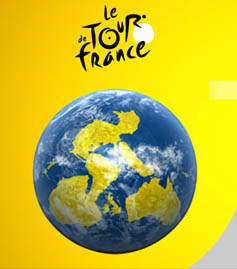
It was coded as well... Like this, for example:
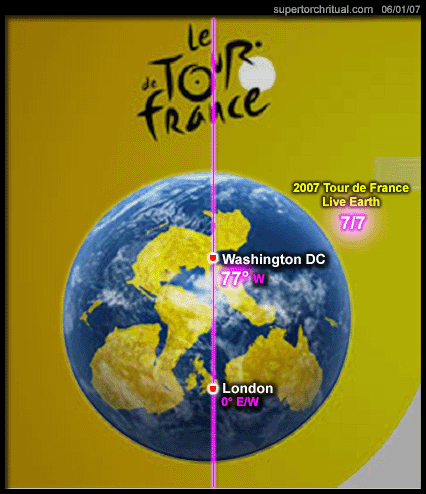
(London and Washington are both Live Earth concert sites.)
In any case, a 'Deep Impact sequence' should follow 7/7/7... Good times...
* * *
Update:
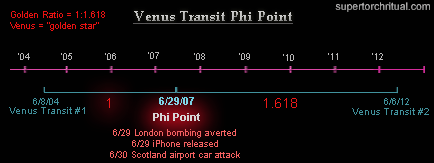
July 20 'Sunshine' released; all about... Resurrection of a dying Sun!


|
.
|
 |
|
|
© 2006 goroadachi.com
http://www.goroadachi.com/etemenanki/777-solarresurrection.htm
|
|
|
|
Reply |
Message 155 of 306 on the subject |
|
|
|
|
Reply |
Message 156 of 306 on the subject |
|
La opinión de Juan
Pero el cuarto evangelio trae una segunda versión. Allí se dice que la venida del Espíritu Santo ocurrió… ¡el mismo domingo en que resucitó Jesús!
En efecto, relata san Juan que al atardecer del primer día de la semana (es decir, del domingo de resurrección), los discípulos estaban reunidos con las puertas cerradas, por miedo a los judíos. Entonces llegó Jesús, se puso de pie en medio de ellos y les dijo: «La paz con ustedes». Y les mostró las manos y el costado. Los discípulos se alegraron de ver al Señor. Jesús volvió a decir: «La paz con ustedes. Así como el Padre me envío a mí, también yo los envío a ustedes». Dicho esto, sopló sobre ellos y les dijo: «Reciban el Espíritu Santo. A quienes perdonen sus pecados les serán perdonados; y a quienes se los retengan les serán retenidos» (Jn 20,19-23).
Según el Nuevo Testamento, entonces, el Espíritu Santo bajó dos veces sobre los discípulos. Una (según san Juan) en Pascua; y la otra (según Los Hechos) cincuenta días más tarde, en Pentecostés. ¿Hubo entonces dos venidas? ¿Acaso la primera no fue eficaz, y se debió recurrir a una segunda?
Problemas con tanto Espíritu
Se han propuesto varias teorías para explicar el doble relato. Por ejemplo, que el Espíritu Santo bajó en Pascua de una manera transitoria, mientras que en Pentecostés bajó de manera definitiva. O que en Pascua el Espíritu descendió de un modo individual, sólo para los discípulos, mientras que en Pentecostés bajó para todo el mundo.
Pero estas teorías hoy no son aceptadas. Porque en ningún momento el evangelio de san Juan da a entender que el Espíritu Santo allí entregado sea provisional, o tenga una función puramente individual. Tanto en Juan como en Hechos, el Espíritu Santo aparece bajando sobre los discípulos de un modo definitivo, pleno, total.
Entonces, ¿cómo explicar que haya dos relatos?
Una nueva semana
La solución que hoy proponen los biblistas es muy simple: los dos autores están contando el mismo acontecimiento, es decir, la única venida del Espíritu Santo sobre los seguidores de Jesús. Pero ambos lo cuentan de manera distinta, porque cada uno tiene una intención especial, o sea, una teología particular.
Para el evangelio de Juan, la muerte y resurrección de Jesús provocaron una nueva creación en el mundo. Es como si la primera creación, aquélla contada en el Génesis en siete días, hubiera quedado obsoleta, superada, y hubiera aparecido de pronto, gracias a la resurrección del Señor, un nuevo mundo con nuevas criaturas. Ahora bien, para que entrara en funcionamiento esta nueva creación, Dios tenía que mandar su Espíritu, tal como había sucedido al principio del mundo. Por eso Juan cuenta que el Espíritu Santo bajó el mismo día de Pascua: porque su misión era crear un mundo nuevo, apenas muerto y resucitado Jesús.
Si atendemos ahora a los detalles que Juan pone en su relato, veremos que aluden a esta nueva creación.
En efecto, comienza diciendo: Al atardecer del primer día de la semana. ¿Por qué? Porque justamente al atardecer del primer día de la semana, Dios había creado el primer mundo (Gn 1,1-5). Por eso ahora, la nueva creación debía comenzar también el mismo día.
|
|
|
 First First
 Previous
142 a 156 de 306
Next Previous
142 a 156 de 306
Next Last
Last
|

